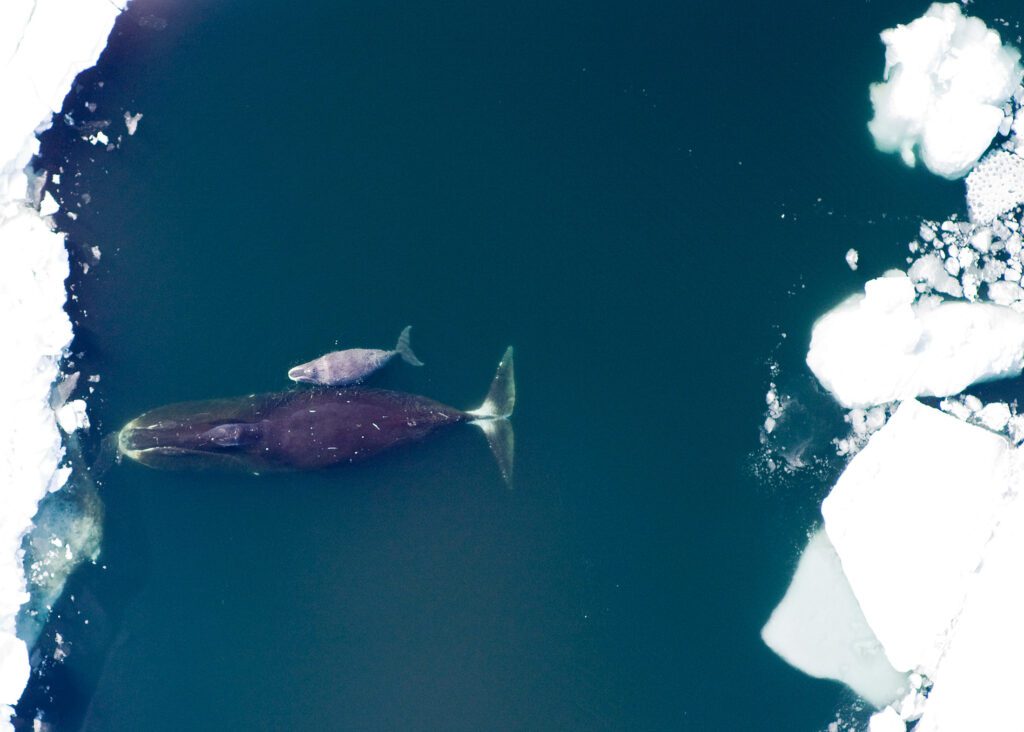August 24, 2022
Eight marine animals that call Canada’s Arctic home
Estimated reading time: 0 minutes
Canada’s Arctic may seem like a cold, barren and inhospitable environment, but there are many species that are well adapted to survive these challenging conditions. The same can be said about marine animals that live in the Arctic Ocean! Ice cover, cold temperatures and fluctuations in food availability are just some of the things that affect marine life found in and around the Arctic Ocean. Even so, there are some species that are permanent residents in Canada’s Arctic and others that migrate here in the summer month to breed and feed. Read on to discover some of the incredible animals that call the north home.
Narwhal
Narwhals are an iconic Arctic whale species, commonly identified by their unique tusk which protrudes from their foreheads. This tusk has coined them the nickname “the unicorns of the sea.” The tusk itself has millions of nerve-endings, making it a highly sensitive tool that plays a large role in the narwhal’s ability to navigate their environment and hunt.
Polar bear
Polar bears may be one of the first animals that comes to mind when we think of the Arctic, and almost two thirds of the world’s polar bears are found in Canada. They have great cultural significance, particularly for Inuit and other northern communities. Polar bears are strong swimmers, using their long, streamlined body and wide paws to move between ice floes with ease. They are considered marine mammals, like whales, because of their dependence on the ocean.
arctic tern
Arctic terns are small seabirds that are truly long distance champions. They travel from the north to the south pole and back again every single year. In its lifetime, a single Arctic tern may travel roughly the same distance as going to the moon and back three times!
bowhead whale
Bowhead whales get their name from the bow-shape of its large upper jaw. Their large heads make up one third of their body length and are encased by a thick layer of blubber. Bowhead whales use their large heads to smash through ice more than 20 centimetres thick. This ice smashing often leaves bowhead whales with distinct scars that scientists use to identify different individuals.

atlantic walrus
The Atlantic walrus is one of the most recognizable marine mammals of the Arctic, thanks to its large, ivory tusks. These tusks are actually elongated canine teeth. They are known to use these tusks to help haul their bodies onto ice floes to rest. Because of their large size, they are rather clumsy and slow-moving on land, but in the water they have smooth and graceful swimming abilities.
beluga whale
Beluga whales are easy to spot, thanks to their white colour, large size and bulging forehead. They are also known as “sea canaries” because they are a chatty species that use a wide variety of sounds to communicate with each other, hunt and navigate. Belugas use echolocation to navigate in the dark waters of the Arctic Ocean.
greenland shark
Greenland sharks are usually found in cold, deep waters in the Arctic and Atlantic Oceans, sometimes at depths greater than 1,500 metres and are known to live an incredibly long time. The oldest Greenland shark studied had lived for nearly 400 years, making it the longest known living vertebrate!

atlantic puffin
Atlantic puffins are colourful and charismatic seabirds that come north to breed, nesting on rocky coasts along the Atlantic and Arctic Oceans. Puffins are excellent swimmers and use their wings to swim underwater when chasing prey. While they can also fly, they are known to be quite clumsy when maneuvering a landing on shore or the ocean’s surface.
Head over to our Marine Life Encyclopedia to learn more about some of the remarkable animals that can be found along Canada’s coasts.
MOST RECENT
June 19, 2025
June 2, 2025
OPINION: From Crisis to Opportunity: Rebuilding Canada’s Fisheries for Climate and Economic Security

